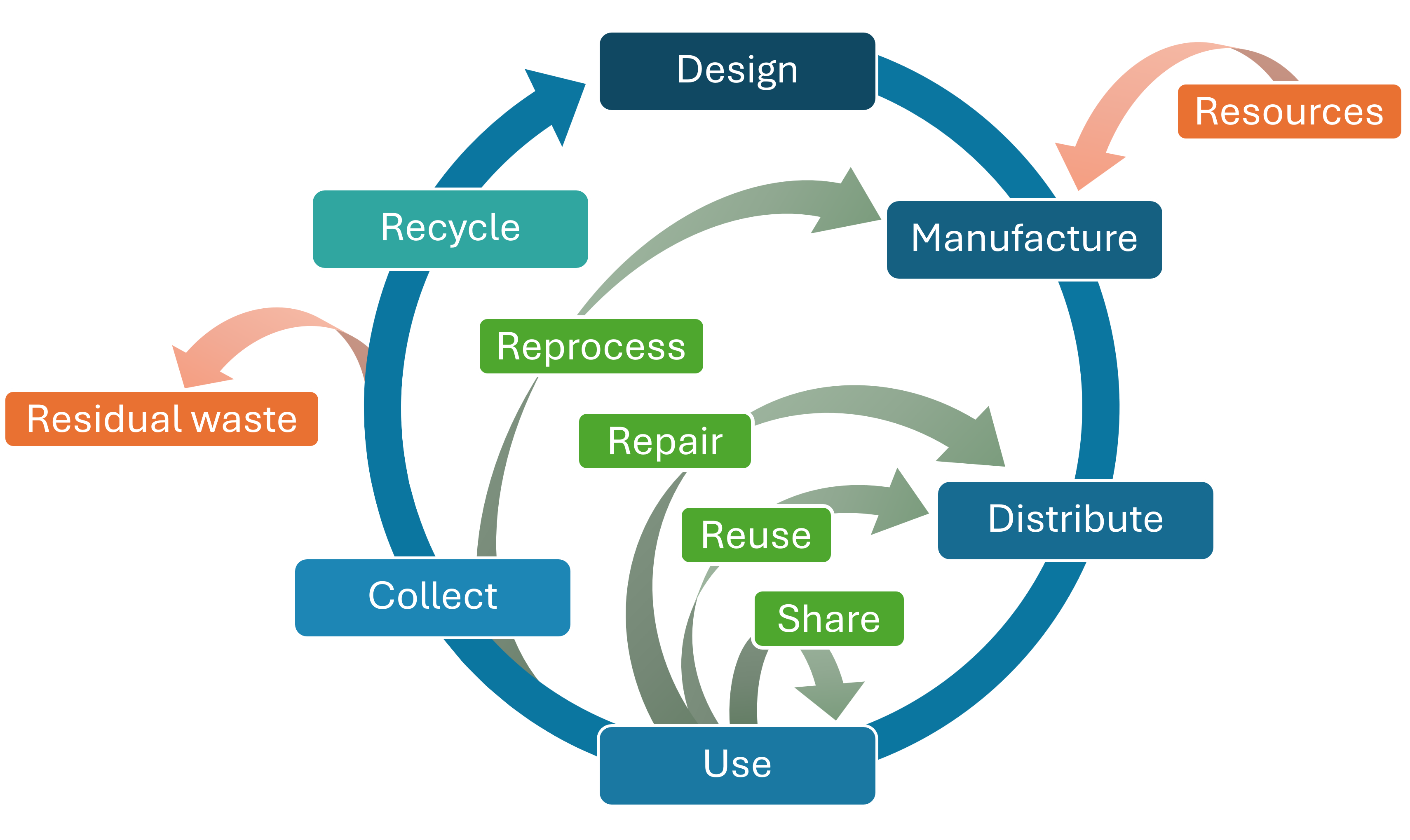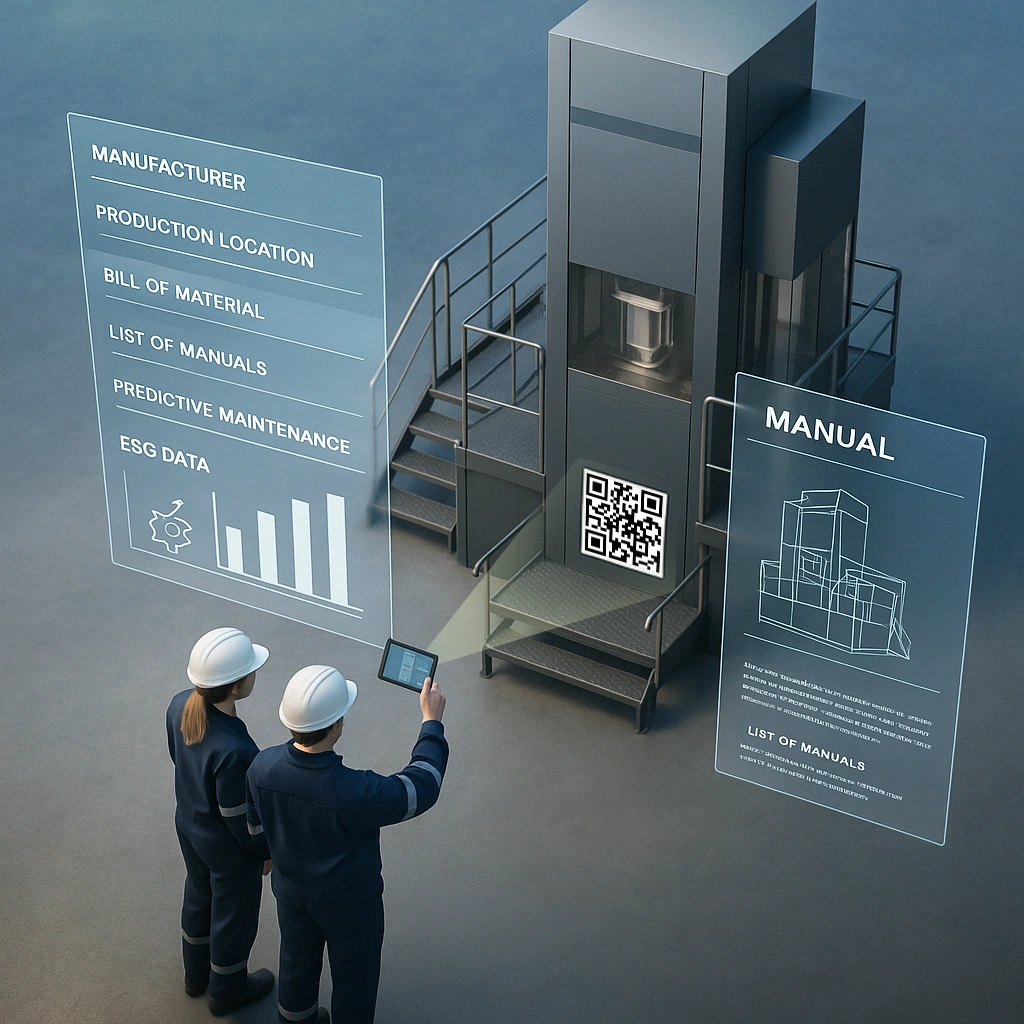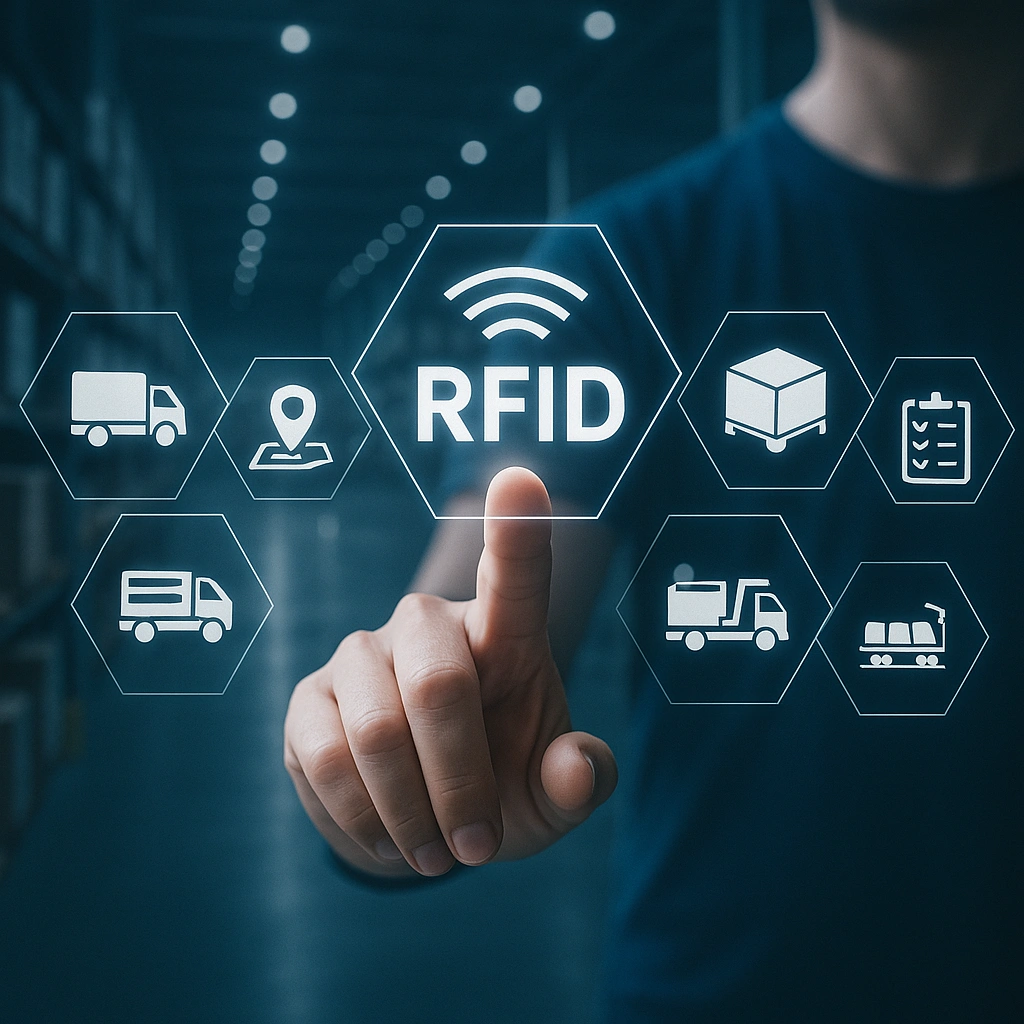The Digital Product Passport (DPP) is becoming mandatory – and it’s a major opportunity. Those who use it wisely stand to benefit from enhanced transparency, greater sustainability, and stronger innovation. The DPP connects data across the entire product lifecycle and becomes the key to new business models and reliable access to the EU market. Helbling actively supports companies in seizing this moment, shaping change, and securing competitive advantages.
Driving the Transition to a Circular Economy with the DPP
In future, only companies that comply with the DPP will be allowed to sell their products in the EU. The Digital Product Passport (DPP) is the centerpiece of the EU-wide strategy for greater sustainability under the Green Deal and the Ecodesign for Sustainable Products Regulation (ESPR). By 2030, it aims to accelerate the shift toward a true circular economy. As a digital file, it accompanies a product throughout its entire lifecycle, from production to recycling. Manufacturers, retailers, and end users gain access to key information such as carbon footprint, reparability, and the materials used. As such, the DPP becomes crucial to making informed decisions and establishing transparent supply chains. Additionally, regulations help to avoid unsold goods being destroyed and contribute to the sustainable transformation through green public procurement.
For the Swiss industry, the DPP is highly relevant due to the high export share to the EU and strong integration into European supply chains. It is also very likely that key elements of the DPP will be implemented or expected in Switzerland, either through bilateral agreements or voluntary market standards.

DPP: The New Key to the EU Market
The DPP fundamentally changes market access to the EU. Resource-intensive sectors are particularly affected, such as textiles, construction, steel, car tires, electronics, furniture, plastics, and packaging. Due to their expected environmental and economic impact, the DPP will be introduced with priority for these product categories. The timeline below illustrates the times at which various products are affected.
The battery passport has already been introduced and will be mandatory from 2026. From this point on, both the DPP and regulatory compliance are prerequisites for market access. Products without a valid DPP will be rejected by EU customs.
Helbling supports clients with expert advice on DPP requirements and their implementation.

Enabling Transparency: What a Digital Product Passport Must Contain
A DPP must essentially include unique identifiers, either at the product, batch, or item level. The exact minimum requirements are still being developed by the responsible EU commissions. However, certain aspects have already been clarified: For example, the precise scope and technical implementation will depend on the product type and its environmental and market relevance.
Functionally, the DPP must provide specific data offline via an information carrier such as a QR code. These include, among others: a registration number, classification data, issuer information, manufacturer ID, and production location.
Additionally, an online component significantly expands the range of information. Publicly accessible content should include, for example: user manuals, material information and origin, carbon footprint, energy consumption, expected lifetime, repairability, recyclability, the presence of hazardous substances, and overall environmental impact.
For certain specialized user groups – such as repair shops, recyclers, or waste management companies – protected data sections with extended information are required. These sensitive contents are only accessible with appropriate access rights. Numerous European initiatives are currently working on the practical design of the DPP. The main challenge is not what the DPP is supposed to achieve, but how it can be implemented broadly across industries and systems.
Benefits and Challenges for Stakeholders
The DPP offers companies many opportunities: it creates greater transparency in supply chains and provides deeper insights into product lifecycles. The DPP therefore supports regulatory compliance and promotes sustainable production and consumption patterns. Moreover, it strengthens the foundation for innovative business models such as Product-as-a-Service – particularly by establishing a direct link between manufacturer and end customer. These models reinforce the circular economy, for example through improved reuse, recycling, or remanufacturing.
At the same time, introducing the DPP poses significant challenges. For example, integration into existing IT landscapes is technically demanding: Different systems must be connected, new data formats introduced, and a consistent data architecture established. Another issue is data responsibility. The issuer of the DPP bears full liability for the accuracy of all information – even if parts originate from suppliers. This requires not only technical verification mechanisms but also clear legal regulations within the supply chain.
Information management is another critical aspect. For instance, documents such as manuals or technical specifications, previously kept internally or on paper, must now be digitized and permanently accessible – tailored to model, batch, or serial number. ESG data must also be collected and maintained. This poses substantial content-related and operational challenges for large or complex product portfolios in particular.
Further complicating matters is the fact that many regulatory requirements and technical standards for the DPP are still not conclusively defined. This uncertainty affects not only the content of the passport but also raises questions about data interoperability, cybersecurity, and implementation costs. Companies are therefore faced with building systems whose final design is still evolving.
Helbling supports organizations in this transformation process – from strategic ideation to technical architecture and carbon footprint analysis of individual components. The goal is to create the foundation for effective and future-proof DPP implementation.
Practical Learnings: Building the Foundation for Effective DPP Implementation
DPP-related practice is currently limited to initial pilot projects. These clearly show what matters in implementation: a large portion of the effort goes into collecting, preparing, and structuring ecodesign data – as seen in the EU pilot project with Burckhardt Compression [1]. A major challenge is the lack of standardized data formats across industries.
While the final formats are not yet adopted, the Ecodesign Regulation (ESPR) emphasizes the need for easy accessibility, especially to avoid overburdening small and medium-sized enterprises (SMEs). At the same time, data privacy remains a central issue, particularly when handling sensitive business and customer data.
Tools such as the IDTA Asset Administration Shell already allow for the generic and structured recording of lifecycle data in the form of digital twins – a central foundation for DPP content. These data typically originate from various systems such as PLM, MES, ERP, or PIM and must be systematically merged, harmonized, and maintained.

DPP Expertise: Interdisciplinary Competence as a Key Success Factor
When it comes to full DPP implementation, companies face various questions, such as:
- How can the environmental footprint of the entire product range be determined?
- What data must be collected and at what level of detail?
- How can existing enterprise systems and data be efficiently linked into a company-wide DPP data source?
- How can DPP pilot projects be scaled without jeopardizing the overall architecture?
- How can sensitive product or customer data be safeguarded while complying with disclosure requirements?
The sheer variety of the questions shows that an interdisciplinary approach is required for successful and sustainable DPP implementation. This means combining expertise from product management, development, regulatory, operations, and after-sales, with technological competencies in data architecture, system integration, supply chain digitalization, product development, and manufacturing.
In practice, the biggest challenge is linking high organizational complexity with broad expertise. The shortage of specialized professionals further exacerbates the situation.
To address this, companies need partners that cover all relevant disciplines and can effectively integrate them. The Helbling Group offers this wide-ranging expertise: long-standing experience in end-to-end development of innovative products and software solutions combined with strong capabilities in digitalization, sustainability consulting, life cycle assessment (LCA), and ESG strategy.
Summary: Helbling’s Competence Enables a Smooth Transition to the DPP
The Digital Product Passport will permanently reshape product design and supply chains, with a clear focus on transparency and sustainability. For companies, navigating the still-uncertain regulatory landscape and providing a DPP for the first time – with all its upstream tasks – is an interdisciplinary challenge. To be ready in time, it is crucial to engage with the looming obligations early, develop a clear strategy, and create a realistic roadmap. This enables a focused, efficient, and sustainable approach to DPP implementation. Helbling supports you in these efforts with in-depth experience and hands-on guidance.
Authors: Philipp Huber, André Wangler
Main Image: Generated by Sora, OpenAI
Sources and follow up documents
[1] EU pilot project with Burckhardt Compression
- European Commission:
Ecodesign for Sustainable Products and Energy Labelling Working Plan 2025-2030
Harmonised rules for the marketing of construction products and repealing Regulation
Regulation concerning batteries and waste batteries
Green claims - European Commission
Digital product passport for the textile sector | Think Tank | European Parliament
- TÜV Rheinland: EU New Battery Regulation (EU) 2023/1542 | TÜV Rheinland




